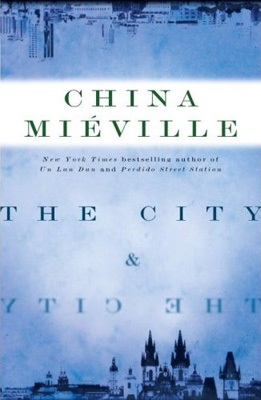China Miéville should need no introduction here. For those who don’t know his name, he has published a number of critically acclaimed and bestselling books, such as Un Lun Dun and Perdido Street Station. Miéville always imbues his books with dazzling originality and his new novel, The City & The City, is no exception.
The City & The City takes place in the cities of Bes?el and Ul Qoma. What makes them interesting is that the two cities occupy the same geographic space. And occasionally, in spaces known as cross hatches, they occupy the same physical space. Citizens of the two cities must ‘unsee’ each other, as you can only legally see and interact with things from your own city. To go to the other city, you must obtain a passport and special permission. Cars drive down a street one direction in Bes?el, cross over into the other city, and drive back down the street but in Ul Qoma.
This unique characteristic of the paired cities becomes a decided problem for Inspector Tyador Borlú, who is investigating a murder. Shortly into the investigation, it becomes clear that the person was killed in Ul Qoma, but the body was dumped in Bes?el. Borlú must now navigate the both cities without breaking international laws.
It is a testament to Miéville’s skill that I had a quick thought to research these cities online to learn more about them. This is hardly unusual for Miéville, as each of his novels features a setting, often a city, that is made wholly from the cloth of Miéville’s brain, and yet is so fully realized that the setting becomes another character in the novel.
Much like Jack O’Connell‘s work, Miéville’s benefits from having a setting with so much depth to it. As much as character to character interaction drives the plot in The City & The City, Bes?el and Ul Qoma control everyone’s decisions. Borlú and his co-investigators are continually stymied by things being in Ul Qoma instead of their native Bes?el. And it’s not just the fact that the settings share a strange topography; each city is complete: there are political organizations, fashions, car styles, dialects, television stations, and more and more.
And yet, despite all this, as it is every time I get further into a Miéville novel, I begin to wonder if all this build-up will pan out in the end. I’ve had a series of disappointments reading his novels where everything starts out great and builds and builds to a point where it felt like Miéville had written himself into a corner. I worried that this would happen again.
It didn’t happen this time. The novel bucked and twisted, but Miéville brought it under reign with his strongest finish to date. The City & The City is not like any other Miéville novel you’ve read. It owes as much stylistically to Hammett and Palahniuk as his earlier work owed to Moorcock and Peake.
Prepare to be surprised. Prepare to read your ass off.










